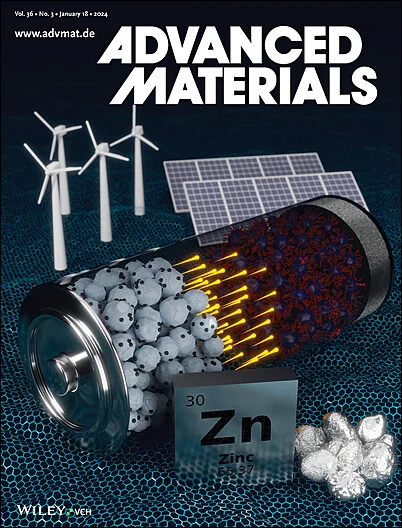Fundamental Chemistry and Functional Mechanisms of Nitrile‐Based Electrolyte in Advanced Battery Systems
IF 26.8
1区 材料科学
Q1 CHEMISTRY, MULTIDISCIPLINARY
引用次数: 0
Abstract
Nitriles have gained attention as promising candidates for secondary battery electrolytes due to the high polarity of cyano groups, excellent cathode compatibility, remarkable oxidation resistance, and broad thermal stability. As additives, nitriles effectively stabilize cathode surfaces and inhibit the dissolution of transition metals. Besides, as the electrolyte solvent, the characteristics of a wide liquidus range, excellent high‐voltage tolerance, and superior conductivity endow it with outstanding performance. Moreover, nitriles are also beneficially applied in solid‐state electrolytes, offering advantages such as strong cation coordination, excellent thermal and electrochemical stability, and enhanced ionic conductivity. However, obstacles such as side reactions with anodes, the formation of non‐robust SEI layers, and inherent toxicity hinder their broader application. Herein, the mechanism of nitriles as additives, and the application progress of nitriles in liquid electrolytes and solid‐state electrolytes are introduced in detail. Furthermore, the current challenges faced by nitriles are in depth analyzed, and the advanced modification strategies of nitriles as secondary battery electrolytes are thoroughly summarized and discussed. Additionally, the future development of nitriles in the field of secondary batteries is prospected. This review provides important references for the future development of nitrile‐based electrolytes, with guiding significance for other electrolyte solvents and additives.先进电池系统中丁腈基电解质的基本化学和功能机理
由于氰基的高极性、优异的阴极相容性、卓越的抗氧化性和广泛的热稳定性,丁腈作为二次电池电解质的有希望的候选者受到了关注。作为添加剂,腈能有效地稳定阴极表面,抑制过渡金属的溶解。此外,作为电解质溶剂,其宽的液相范围、优异的耐高压性和优异的导电性使其具有优异的性能。此外,腈也被广泛应用于固态电解质中,具有强阳离子配位、优异的热稳定性和电化学稳定性以及增强的离子导电性等优点。然而,诸如与阳极的副反应,非坚固SEI层的形成以及固有毒性等障碍阻碍了它们的广泛应用。本文详细介绍了丁腈作为添加剂的作用机理,以及丁腈在液态电解质和固态电解质中的应用进展。深入分析了目前丁腈所面临的挑战,并对丁腈作为二次电池电解质的先进改性策略进行了深入的总结和讨论。展望了腈在二次电池领域的发展前景。这一综述为丁基电解质的未来发展提供了重要参考,对其他电解质溶剂和添加剂具有指导意义。
本文章由计算机程序翻译,如有差异,请以英文原文为准。
求助全文
约1分钟内获得全文
求助全文
来源期刊

Advanced Materials
工程技术-材料科学:综合
CiteScore
43.00
自引率
4.10%
发文量
2182
审稿时长
2 months
期刊介绍:
Advanced Materials, one of the world's most prestigious journals and the foundation of the Advanced portfolio, is the home of choice for best-in-class materials science for more than 30 years. Following this fast-growing and interdisciplinary field, we are considering and publishing the most important discoveries on any and all materials from materials scientists, chemists, physicists, engineers as well as health and life scientists and bringing you the latest results and trends in modern materials-related research every week.
 求助内容:
求助内容: 应助结果提醒方式:
应助结果提醒方式:


